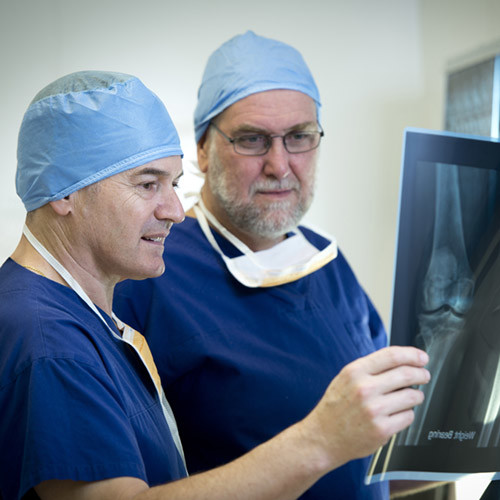
Robotic Surgery
Robotic surgery utilises computer-assisted planning combined with a robotic arm guided by your surgeon. It is an advancement of a current technology using computer navigation to assist positioning of a joint replacement implant.
Used regularly by our surgeons since 2017, robotic assisted joint replacement is a relatively new technology. The major aim is to assist the surgeon in achieving highly accurate placement of a hip or knee prosthesis. Hip and knee replacements already are proven to provide excellent long term outcomes. As robotics is relatively new there are not yet any studies on how this technology affects ‘long term’ outcomes. Shorter term studies have been undertaken and published in peer-reviewed medical journals.
- The patient is assessed by the Orthopaedics SA surgeon and deemed an appropriate candidate for joint replacement surgery
- A specialised CT scan of the limb is performed to map bony anatomy and alignment
- A pre-operative surgical plan including implant positioning and sizing is developed by the robotic software and reviewed by the surgeon
- The surgeon-controlled robotic arm aids in implant positioning during surgery to achieve the desired plan. The robotic arm is held by the surgeon and provides live visual image feedback and haptic (tactile) feedback.
All patients who are suitable for joint replacement may be suitable for robotic assisted surgery. Your Orthopaedic Surgeon will discuss your suitability for Robotic Surgery.
Most patients are in hospital for only 2-3 days after robotic assisted surgery.
Recovery after surgery depends on a multitude of factors, mainly related to the patient’s pre-operative strength, weight, stiffness, and general medical health. Most patients will be expected to walk with a walking stick before leaving hospital.
Book an appointment with our orthopaedic specialists
Book an appointment






